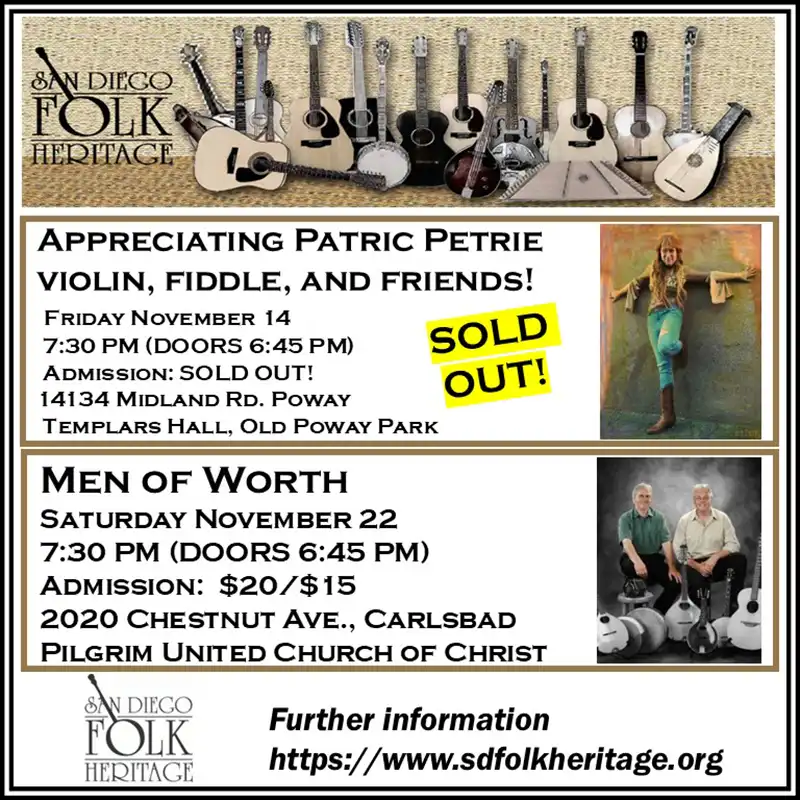Bluegrass Corner
Bill Monroe
Bill Monroe is universally considered the “father of bluegrass” music. If he were still alive (he died in September 1996) Bill Monroe would have turned 100 in September of 2011. Let’s take a look at this man known as the “father” and see why he is so universally regarded as a key figure in the history of bluegrass music.
Bill Monroe was born on a farm near Rosine, Kentucky, in 1911. He was the youngest of eight children. Because his older brothers already played the fiddle and guitar, Bill Monroe was relegated to playing the less desirable mandolin. He recalled that his brothers insisted he remove four of the mandolin’s eight strings so he would not play too loudly.
Bill Monroe’s musical career began in earnest when he left home and teamed with his brothers Birch and Charlie in the late 1920s, presenting themselves in several configurations as the Monroe Brothers. In 1938 he played a brief stint with a group called the Kentuckians and then in that same year he formed the first version of what was to become the seminal band Bill Monroe and his Bluegrass Boys. One year later he made his first appearance on the Grand Ole Opry.
A key development occurred in Monroe’s music with the addition of North Carolina banjo prodigy Earl Scruggs to the Blue Grass Boys in December 1945. Scruggs played the instrument with a distinctive three-finger picking style that immediately caused a sensation among Opry audiences. Scruggs joined a highly accomplished group that included singer/guitarist Lester Flatt, fiddler Chubby Wise, and bassist Howard Watts, who often performed under the name Cedric Rainwater.
In retrospect, this lineup of the Blue Grass Boys has been dubbed the “original bluegrass band,” as Monroe’s music finally included all the elements that characterize the genre, including breakneck tempos, sophisticated vocal harmony arrangements, and impressive instrumental proficiency demonstrated in solos or “breaks” on the mandolin, banjo, and fiddle.
The 28 songs recorded by this version of the Blue Grass Boys for Columbia Records in 1946 and 1947 soon became classics of the genre, including “Toy Heart,” “Blue Grass Breakdown,” “Molly and Tenbrooks,” “Wicked Path of Sin,” “My Rose of Old Kentucky,” “Little Cabin Home on the Hill,” and Monroe’s most famous song, “Blue Moon of Kentucky.” The last-named was recorded by Elvis Presley in 1954, appearing as the B-side of his first single for Sun Records. Monroe gave his blessing to Presley’s cover of the song, originally a slow waltz time ballad, and in fact re-recorded it himself with a faster arrangement after Presley’s version became a hit. (Thanks to Wikipedia for much of this history.)
Many were to follow in Mr. Monroe’s footsteps, and his mark and the impressions left by this remarkable man and his Bluegrass Boys Band remains the gold standard for bluegrass today. Let’s take a look at some of the important innovations and impacts that this man had on bluegrass music, on country music, and on rock ‘n’ roll. Quiz: who is the only person to be inducted into all three music halls of fam: rock ‘n’ roll, country, and bluegrass? You guessed it, Bill Monroe.
  Story songs. Bill Monroe was the first to bring story songs to prominence, featuring stories from the farm and from the daily life of working people. While this approach to songwriting is accepted now as standard, and such story songs colored early and current country music with a heavy brush, Bill Monroe gets the bulk of the credit for starting this trend.
The five-piece band. Before Bill Monroe finalized the configuration of his Bluegrass Boys band, there was no set pattern to this kind of band. It was Bill Monroe who set the standard: a banjo, a guitar, a mandolin, a bass, and a fiddle comprise the quintessential bluegrass band, a fact still true today (although it is noted that Bill Monroe had an accordion in his band for a period during the 1940s, played by a woman no less — Sally Ann Forrester, and he later experimented with drums and electric instruments). When you see a five-piece bluegrass band today, you have Bill Monroe to thank for institutionalizing that combination of instruments as the “standard.”
High Lonesome singing. It was Bill Monroe with his high tenor voice who was first to sing in the upper keys, Bb, B, and C, driving his voice up to the higher registers, blending it with three-part harmonies that came to be defined as “that high lonesome sound,” which is characteristic of bluegrass. This Monroe style of singing was borrowed by many country and rock ‘n’ roll performers as many have copied this technique since, but we have Bill Monroe to thank for that innovation.
Mandolin. Bill Monroe was the first to play the mandolin with a driving backbeat “chop” rhythm and the first to make it a stunning lead instrument, spinning fast paced melody-based leads. Today, this role of the mandolin in bluegrass is taken for granted, but only because Bill Monroe introduced this approach to the instrument and to the music.
Some Great Music. Maybe most important of all, Bill Monroe wrote, perfumed, and recorded some great, timeless music. It has stood the test of time and no doubt will continue to do so. Thanks Bill, and happy birthday!
Happy Anniversary, San Diego Troubadour!
In the winter of 2011, in my role as a member of the International Bluegrass Music Association board of Directors, I traveled to Germany to attend the annual conference of the European Bluegrass Music Association, the sister organization to IBMA. There were delegates from all over Europe — France, England, Ireland, Scotland, Germany, Romania, Finland, Holland, and elsewhere. One evening in an after hours pub encounter, in my practiced and best German, I introduced myself to a hot young mandolin player from Germany with whom I was having a great time playing fiddle. His response startled me: “Oh. I know you! You write that column for the Troubadour!” Seems he spent time in San Diego and has a friend who occasionally sends over issues.








